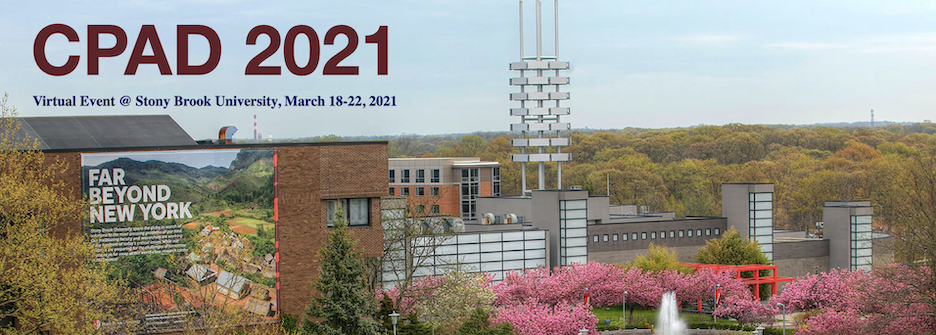Speaker
Description
Barium fluoride (BaF$_2$) has a scintillation light component with a decay time shorter than 600 ps, the fastest of any inorganic scintillator, and is also quite radiation hard. This makes BaF$_2$ an excellent candidate for an electromagnetic calorimeter for the next generation of rare decay experiments, as it could provide superb time resolution, high rate capability and excellent radiation hardness. In addition to future high energy physics and nuclear physics experiments a BaF$_2$ calorimeter would find use in GHz hard x-ray imaging for future X-ray Free Electron Laser (XFEL) facilities and PET scanning.
The use of BaF$_2$ in such applications has, however, been stymied by several difficulties: 1) the fast scintillation component peak is at 220 nm, a difficult VUV wavelength for photon detection, and
2) there is a much larger 650 ns scintillation component nearby at 300 nm, which would cause pileup and noise in an ultrafast environment.
The past several years have seen significant progress in confronting these issues by attacking the problems in two ways: doping BaF$_2$ with yttrium to significantly reduce the slow component (the subject of a separate submission by R.-Y. Zhu), and developing a photosensor that has excellent sensitivity at 220 nm while having greatly reduced response at 300 nm, the subject of this paper.
Working with FBK and JPL, we have produced a first version a SiPM well-matched to BaF$_2$ readout. The sensor consists of 3 x 2 array of 6mm x 6mm SiPMs that incorporate a three-layer interference filter. We have measured a PDE of ~30% at the fast component, with efficiency at the slow component reduced by a factor of about 5. These devices have been employed to read out BaF$_2$ crystals with good signal-to-noise performance.
We next plan to improve these SiPMs in two important ways. The filter performance can be substantially improved using a five-layer interference filter, and these techniques can be employed to fabricate a back-illuminated device incorporating a delta-doped structure that will substantially improve UV radiation hardness, PDE and timing characteristics.
